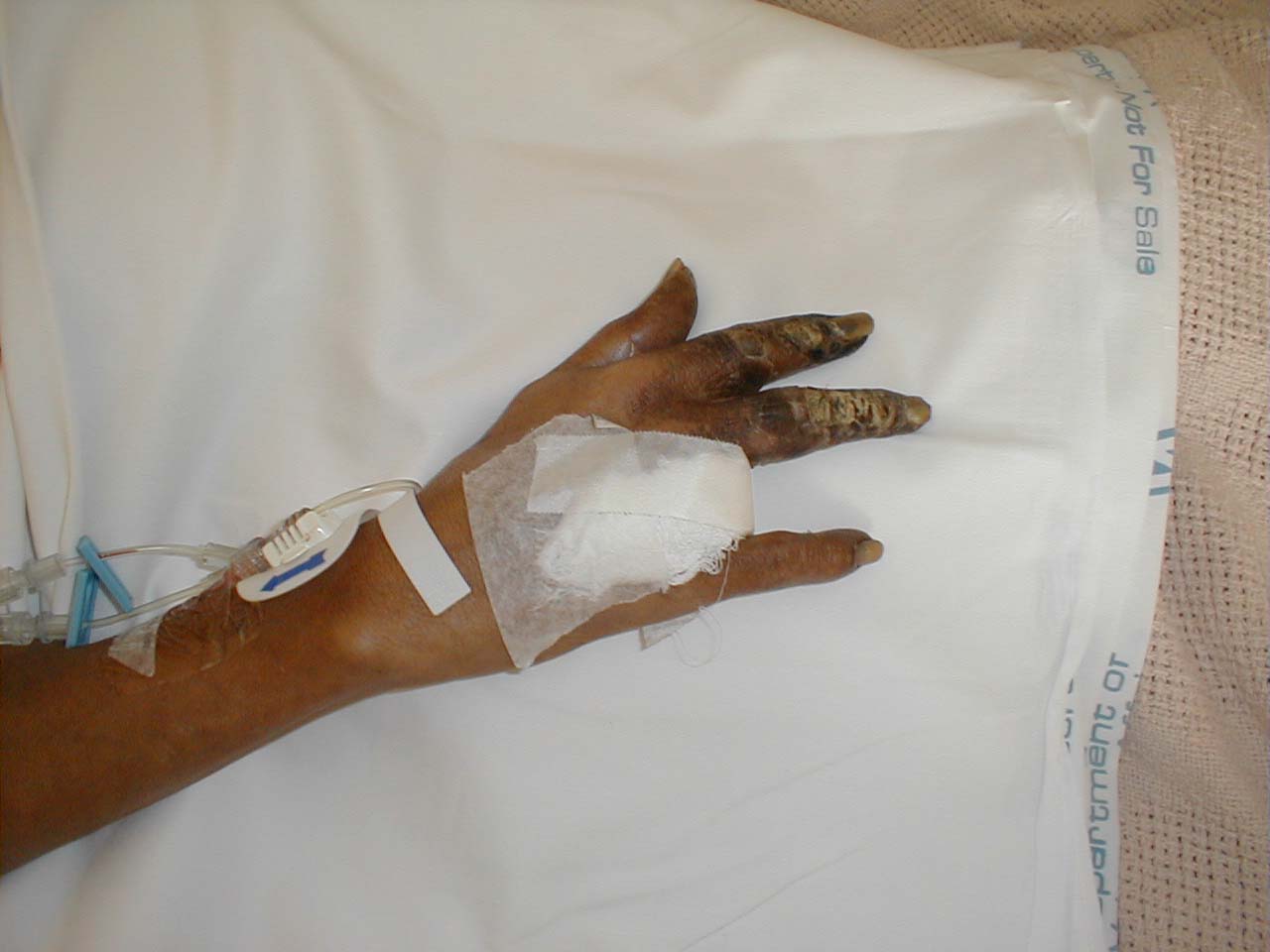Peripheral arterial disease physical examination: Difference between revisions
No edit summary |
(→Skin) |
||
| Line 23: | Line 23: | ||
*[[Pallor]] of feet with elevation | *[[Pallor]] of feet with elevation | ||
*Signs of chronic ischemia: | *Signs of chronic ischemia: | ||
**Hair loss, thickened nails, trophic sin changes hypertrophic nails, smooth and shiny skin, coolness, [[pallor]] or [[cyanosis]]. | **[[Hair loss]], thickened nails, trophic sin changes hypertrophic nails, smooth and shiny skin, coolness, [[pallor]] or [[cyanosis]]. | ||
*Dependent rubor | *Dependent rubor | ||
Revision as of 15:33, 30 September 2012
|
Peripheral arterial disease Microchapters |
|
Differentiating Peripheral arterial disease from other Diseases |
|---|
|
Diagnosis |
|
Treatment |
|
Case Studies |
|
AHA/ACC Guidelines on Management of Lower Extremity PAD |
|
Guidelines for Structured Exercise Therapy for Lower Extremity PAD |
|
Guidelines for Minimizing Tissue Loss in Lower Extremity PAD |
|
Guidelines for Revascularization of Claudication in Lower Extremity PAD |
|
Guidelines for Management of Acute Limb Ischemial in Lower Extremity PAD |
|
Guidelines for Longitudinal Follow-up for Lower Extremity PAD |
|
Peripheral arterial disease physical examination On the Web |
|
American Roentgen Ray Society Images of Peripheral arterial disease physical examination |
|
Peripheral arterial disease physical examination in the news |
|
Directions to Hospitals Treating Peripheral arterial disease |
|
Risk calculators and risk factors for Peripheral arterial disease physical examination |
Editors-in-Chief: C. Michael Gibson, M.D., Beth Israel Deaconess Medical Center, Boston, MA; Robert G. Schwartz, M.D. [1], Piedmont Physical Medicine and Rehabilitation, P.A.; Associate Editor-In-Chief: Cafer Zorkun, M.D., Ph.D. [2]
Please help WikiDoc by adding more content here. It's easy! Click here to learn about editing.
Overview
Physical Examination
Vitals
- Decreased or absent pulses
- Palpation of the carotid pulses and notation of the carotid upstroke and amplitude and presence of bruits.
- Palpation of the pulses at the brachial, radial ulnar, femoral, popliteal, dorsalis pedis, and posterior tibial sites. Performance of Allen’s test when knowledge of hand perfusion is needed.
- Pulse intensity should be recorded numerically:
- 0, absent
- 1, diminished
- 2, normal
- 3, bounding
- Measurement of blood pressure in both arm and notation of any inter arm asymmetry.
Skin
- Pallor of feet with elevation
- Signs of chronic ischemia:
- Dependent rubor
Auscultation
- Bruits can be heard over the sites of arterial narrowing.
- Auscultation of the abdomen and flank for bruits.
- Auscultation of both femoral arteries for the presence of bruits
Extremities
- Muscle atrophy

(Image courtesy of Charlie Goldberg, M.D.)